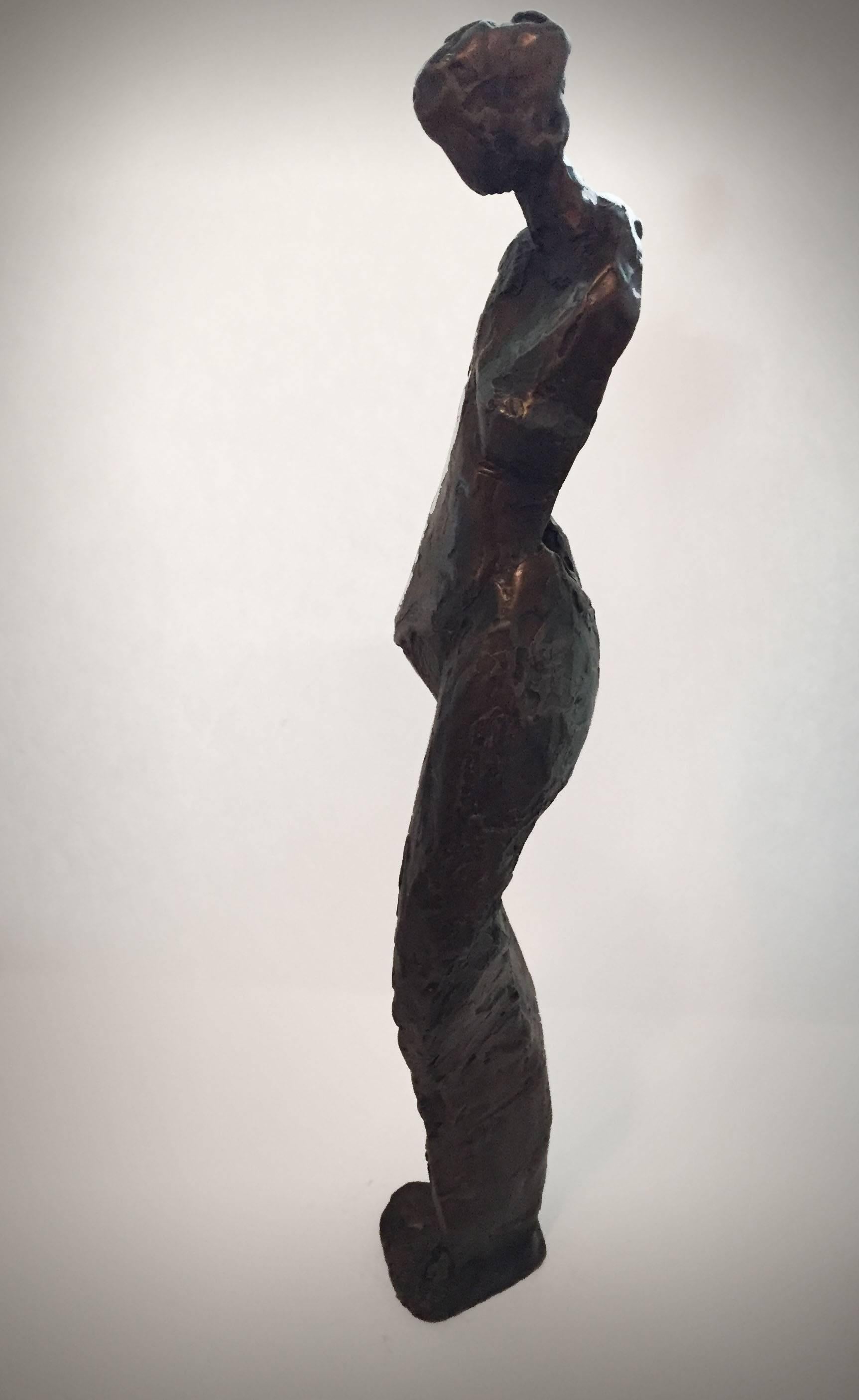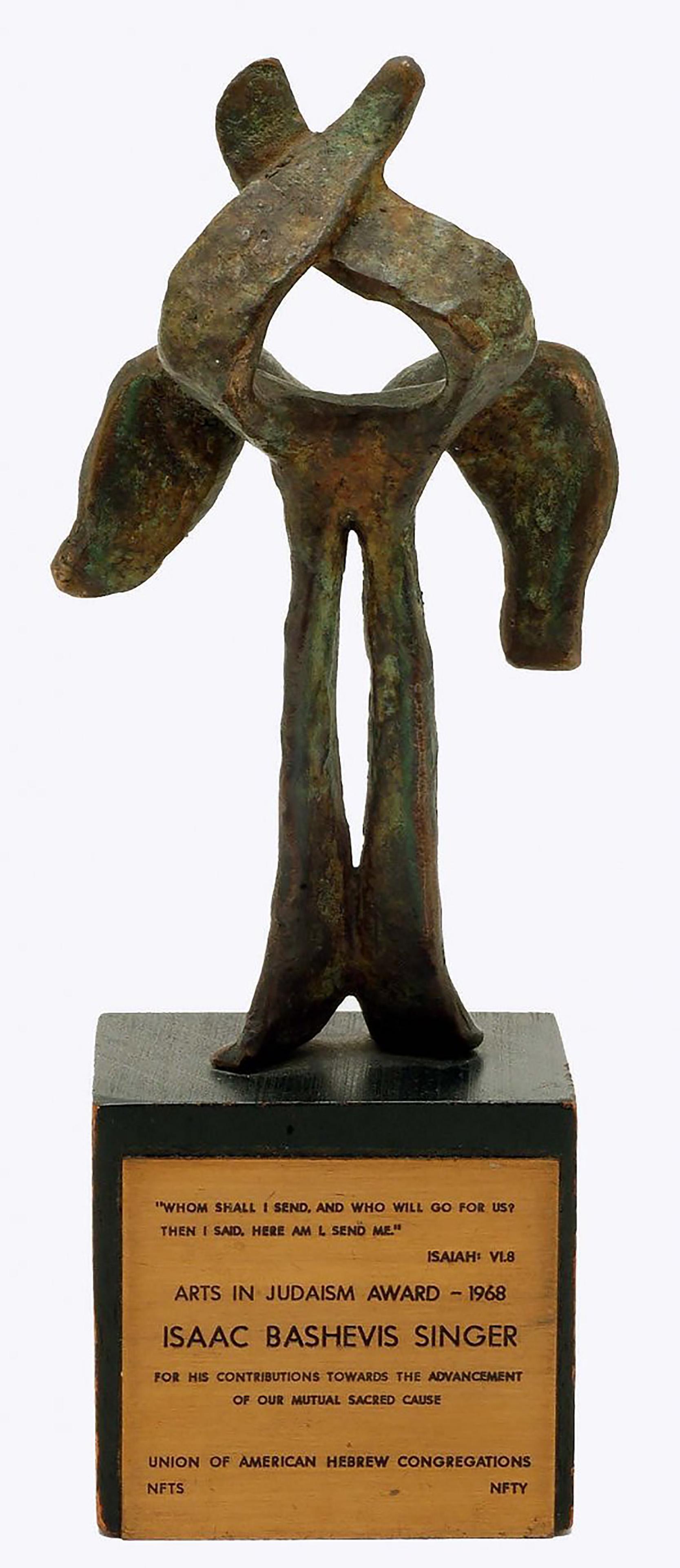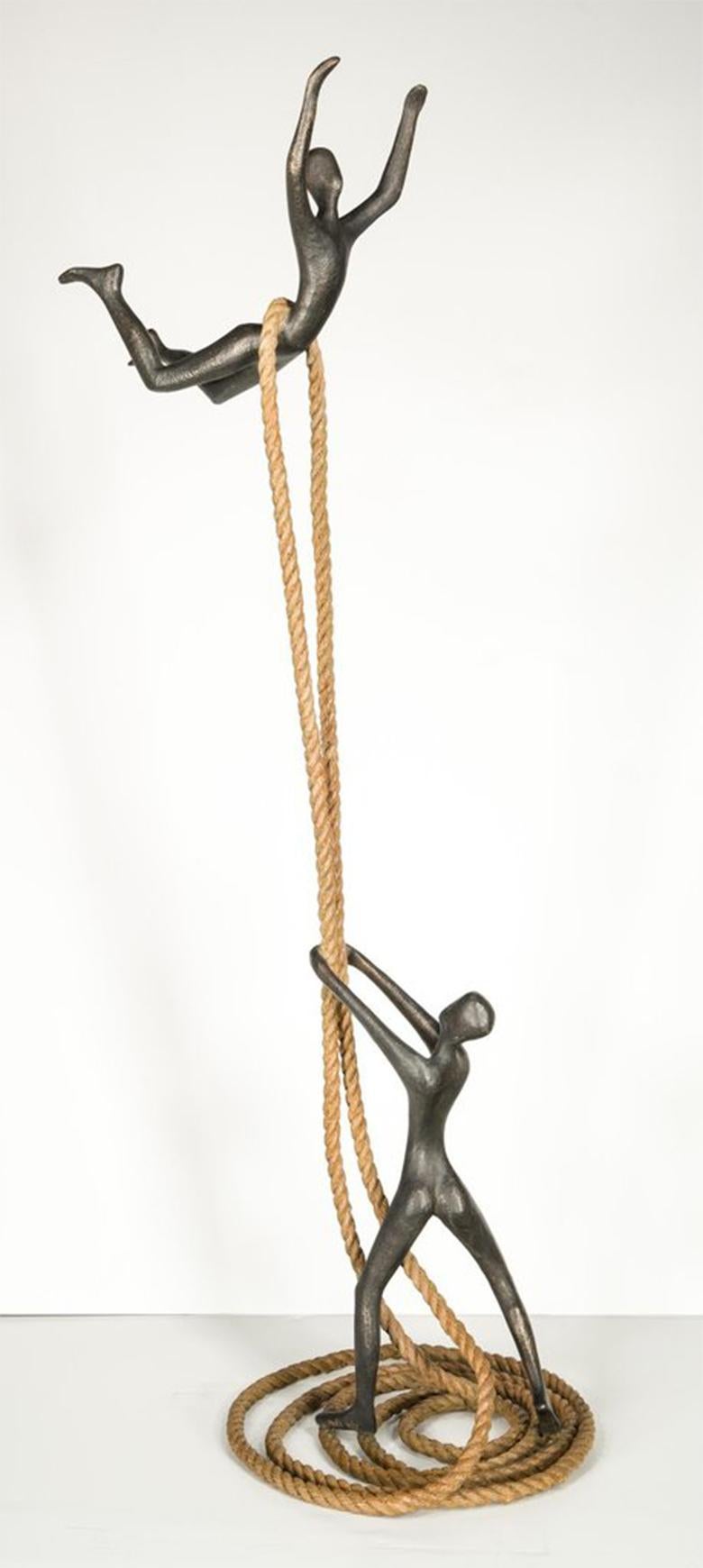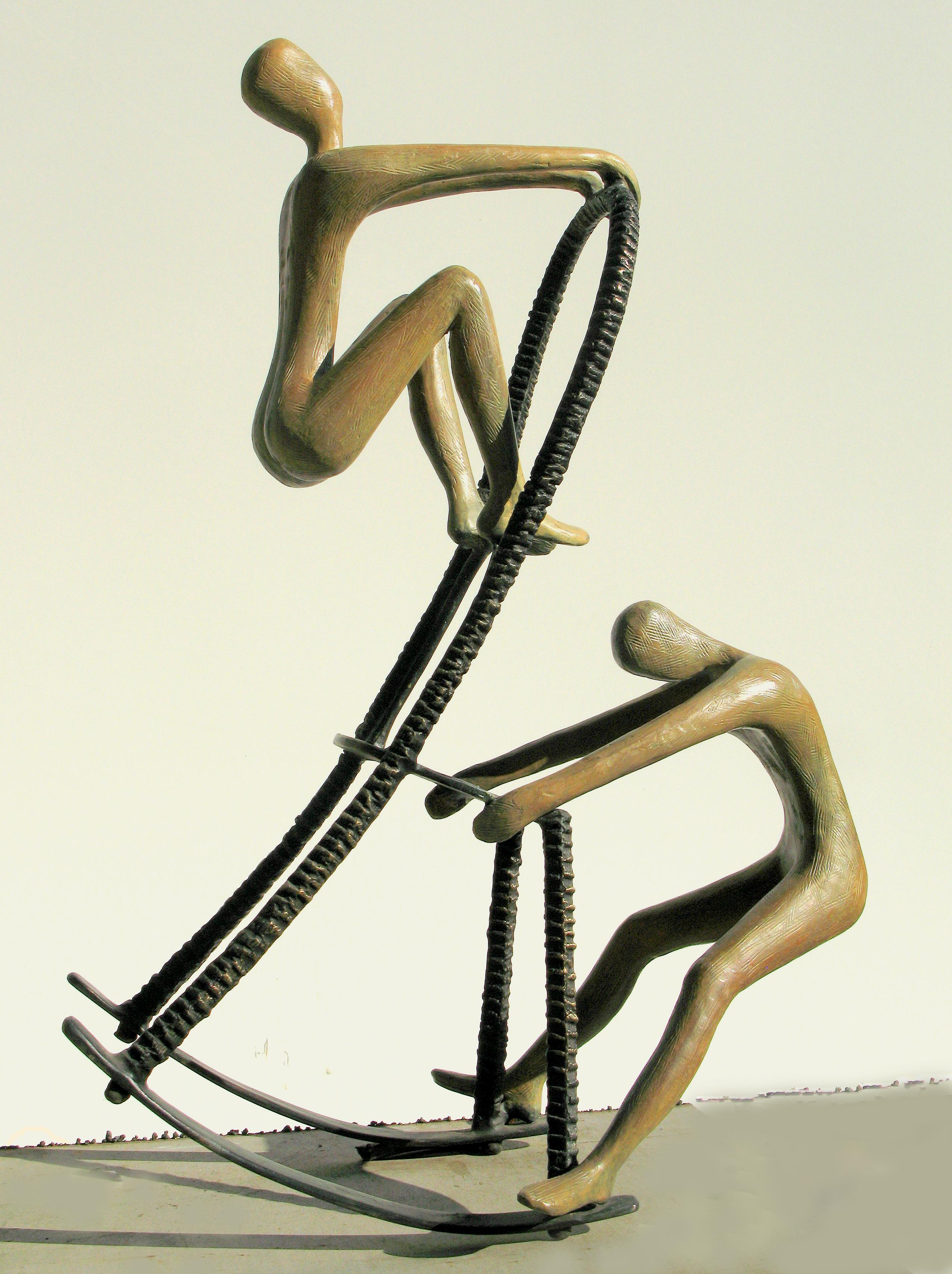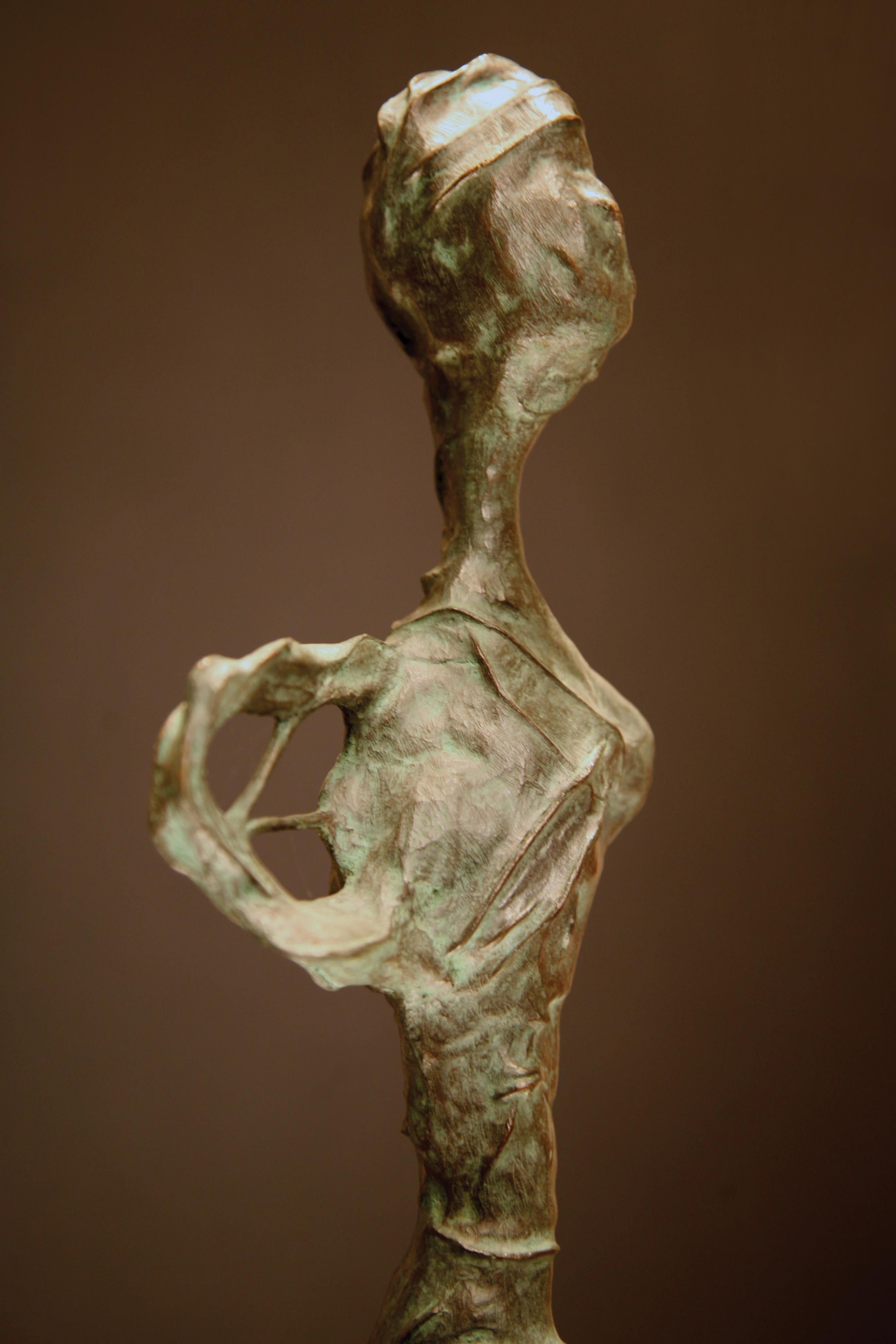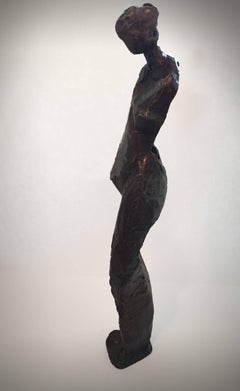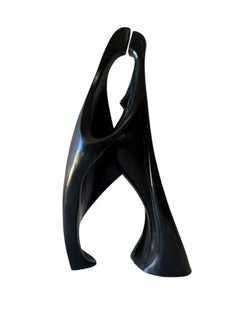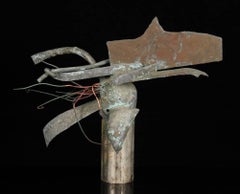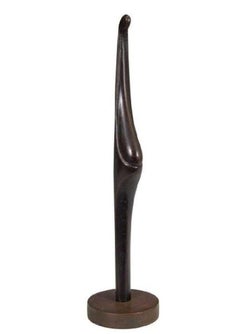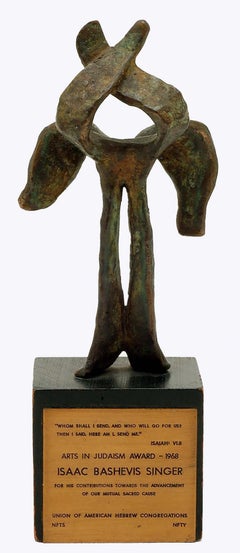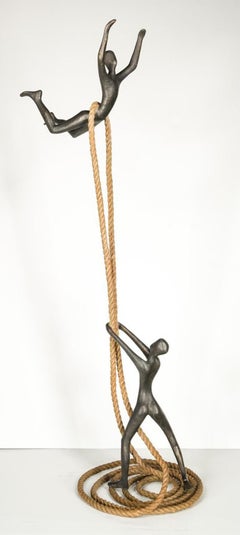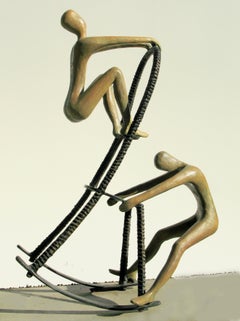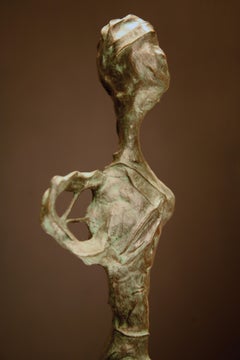Items Similar to Unknown Israeli Bronze
Want more images or videos?
Request additional images or videos from the seller
1 of 5
UnknownUnknown Israeli Bronze
$600
£454.50
€524.36
CA$841.27
A$937.79
CHF 493.59
MX$11,368.68
NOK 6,284.38
SEK 5,842.95
DKK 3,913.74
About the Item
Bronze figurative sculpture
Unknown Israeli Artist
- Dimensions:Height: 9 in (22.86 cm)Width: 3 in (7.62 cm)Depth: 3 in (7.62 cm)
- Medium:
- Period:
- Condition:
- Gallery Location:Surfside, FL
- Reference Number:1stDibs: LU38210787182
About the Seller
4.9
Platinum Seller
Premium sellers with a 4.7+ rating and 24-hour response times
Established in 1995
1stDibs seller since 2014
1,792 sales on 1stDibs
Typical response time: <1 hour
- ShippingRetrieving quote...Shipping from: Surfside, FL
- Return Policy
Authenticity Guarantee
In the unlikely event there’s an issue with an item’s authenticity, contact us within 1 year for a full refund. DetailsMoney-Back Guarantee
If your item is not as described, is damaged in transit, or does not arrive, contact us within 7 days for a full refund. Details24-Hour Cancellation
You have a 24-hour grace period in which to reconsider your purchase, with no questions asked.Vetted Professional Sellers
Our world-class sellers must adhere to strict standards for service and quality, maintaining the integrity of our listings.Price-Match Guarantee
If you find that a seller listed the same item for a lower price elsewhere, we’ll match it.Trusted Global Delivery
Our best-in-class carrier network provides specialized shipping options worldwide, including custom delivery.More From This Seller
View AllUnknown Israeli Bronze
Located in Surfside, FL
Bronze figurative sculpture
Unknown Israeli Artist
Category
20th Century Figurative Sculptures
Materials
Bronze
Latin American Art Figurative Abstract Bronze Sculpture Lovers Marcelo Morandin
Located in Surfside, FL
Marcelo Morandin 1933-1996
Untitled (Embracing Couple, Lovers)
Bronze 1988; ed. P/E; Hand signed, dated and editioned to lower edge DImensions: 48.5 x 32 x 21 cm / 18.8 x 12.5 x 8.2 inches (approximately)
PAREJA, Bronce, patinado
Marcelo Morandin (1933 - 1996) was active/lived in Argentina, Mexico.
Argentinian, Mexican Postwar & Contemporary sculptor Morandin is best known for his monumental sculpture. This is a wonderful, art deco inspired nude couple, the woman appears pregnant).
Marcello Morandín (Marcelo Román Morandín Paroni) was born in 1933 in Argentina. He was an important plastic artist and Argentine architect, distinguished in Mexico for being an excellent sculptor and furniture designer. At the end of his studies at the Faculty of Architecture of Buenos Aires, Argentina, he traveled to Mexico and settled in Xalapa, Veracruz. In this city he was part of several artistic projects and noted for being one of the founders of the Department of Aesthetic Research and Applied Design at the University of Veracruz, as well as the Department of Aesthetic Research at UNAM. Between the years 80 and 90, he carried out several monumental works, among them "La pigeon de la paz" a project for the UN; "The foundation of Tenochtitlan" located in front of the Official Residence of Los Pinos; and "The Kinetic Tower" Of the government of Veracruz that combines the light and the sound with diverse moving parts to the compass of the music of Arnold Schoenberg. (Lily Kassner. Dictionary of Mexican sculptors of the twentieth century. Volume II. Mexico. Conaculta, 1997). Similar in style to Israeli artists Aharon Bezalel and Isaac Kahn.
He has shown with Jose Villalobos, Nicolas Moreno, Pedro...
Category
1980s Abstract Sculptures
Materials
Bronze
Brutalist Bronze Abstract Modernist Sculpture
Located in Surfside, FL
In the manner of Julio Gonzalez, mixed metal sculpture.
Neo-Dada Abstract Sculpture: Assemblages
Abstract sculpture followed a slightly different course. Rather than focusing on non-figurative subject matter, it concentrated on materials, hence the emergence of Assemblage Art - a form of three-dimensional visual art made from everyday objects, said to be 'found' by the artist (objets trouves). Popular in the 1950s and 1960s in America, assemblage effectively bridged the gap between collage and sculpture, while its use of non-art materials - a feature of Neo-Dada art - anticipated the use of mass-produced objects in Pop-Art. Assemblage sculpture is exemplified by the works of Louise Nevelson (1899-1988), such as Mirror Image 1 (1969, Museum of Fine Arts, Houston), and by Jean Dubuffet (1901-85) and his Monument with Standing Beast (1960, James R. Thompson Center, Chicago). The idiom was considerably boosted by an important exhibition - "The Art of Assemblage" - at the Museum of Modern Art, in New York, in 1961.
Other examples of the Neo-Dadaist-style "junk art...
Category
20th Century Abstract Expressionist Abstract Sculptures
Materials
Bronze, Copper
Israeli Bronze Modernist Sculpture Pregnant Woman Abstract Figure Safed, Ein-Hod
By Victor Halvani
Located in Surfside, FL
From a limited edition. an abstract elongated art deco form of a mother with child.
signed on bottom of wooden base and etched into bronze.
Victor Halvani no doubt had an enchanted childhood. A warm loving Jewish family. His father a judge, his mother, descendent from a rabbinic family, was a great storyteller who transformed the heroes of the Bible into her child’s best friends. A small village at the base of the pyramids of Giza, school trips to the Valley of the Kings in Aswan. Ancient Egyptian art looking at the dreamy child from every corner. Given the chance to look back, it becomes clear that Victor’s lifelong dream – to become an artist, had it’s beginnings right there – in the child dreaming at the Nile.
Victor Halvany was born in 1930 to Bella and Yitzchak (OBM). Soaked in that enchanted childhood atmosphere, Victor found himself spending hours and days in the Cairo museum of art, looking at the exhibits and drawing them with intensity and enthusiasm. His inspiration filled drawings caught the eye of his teachers and with there encouragement he entered a national competition in which he won first place. This lead to him winning a full scholarship at the art faculty in Zamalek and at the Cairo University. Full of hopes and dreams he began his studies, only to be interrupted after one year. The Israeli war of independence began and subsequently the pogroms, and the urgent need of Egyptian Jews to emigrate, going first to France and than to Israel. Victor’s first years in Israel were years of struggle for survival, but simultaneously years of activity and progress. In 1950, while serving in the army, Victor met Margalit, the women at his side, mother of his children and the most present character in his career of activity and art. With Margalit’s encouragement and support he not only raised a family, fathering two boys and a girl, but also fulfilled his dream and was fortunate to have a full and inspiring career- as a person, artist, and teacher. Today, in his advanced age, Victor continues his daily activities: creates, plans, exhibits, and as always – open-minded, curious, learning, getting updated.
1953 – Received scholarship and year of study at Bezalel School of art and design in Jerusalem.
1956 – Finished education studies and received BA in education. Tel Aviv art teachers college.
1969 – Scholarship to study abroad for a year at Hammersmith College of art & building in London, graduating cum laude.
1970 – Received MA in art education and sculpture.
2015 – Participation in the sculpture exhibit at the Mamilla mall promenade in Jerusalem. Sculptures exhibited:
“David with harp”, “Mother playing with child”, “Yuval father of harp players”
2014 – Participation in sculpture exhibit at the Mamilla Mall Promenade in Jerusalem, sculptures exhibited:
“Ruth and Naomi” “David playing harp”, “Girl with gazelle”
2013 – Ein Hod, Yemini sculpture garden, at main entrance to artist’s colony, sculpture exhibited “David playing the harp”.
2012 – Opening of “Art exhibit- Victor Halvani”. At the Halvani residence in Ein Hod, exhibits large collection of sculptures and prints. Visits by appointment.
2011 – Safed, “The Shofar” art project, exhibited at “Safed liberation square”, at main entrance to the city, in the presence of the mayor and representatives of U.S. donors.
2010 – Safed, “The Spies” art project placed, and square named Halvani, at southern entrance to the city of Safed, in presence of the Mayor, Ilan Shochet, and representatives of U.S. donors.
2001 – Participation in international exhibit in San Francisco, U.S.
2001 – Katzrin, Ramat Hagolan, Exhibit of sculptures “Mother playing with child”, “Hope for peace”, and “David with slingshot”, around the city.
2000 – New York, U.S. – International millennium art expo – exhibited “The Hope”.
1999 – Safed, completion of phase 2 of Victor Halvani sculpture garden in Oranim neighborhood.
1998 – Bennington, U.S. – Solo exhibit with collection of bronze sculptures at Bennington art center.
1997 – Stillwater, Oklahoma, U.S. – Placement of sculpture “David playing the harp” at the entrance to Seretean art center at the University of Oklahoma.
1996 – Miami, Florida, U.S., Center for international exhibits – solo exhibit, selection of bronze sculptures.
1995 – West Bloomfield, Michigan, U.S. – Placement of sculpture “David playing harp” at the Reform Jewish Cultural Center park.
1995 – Boston, U.S. – placement of sculpture “David playing harp” at Stanley & Barbara Young...
Category
20th Century Contemporary Figurative Sculptures
Materials
Bronze
Israeli Abstract Figures Art Brut Polychromed Bronze Sculpture Aharon Bezalel
By Aharon Bezalel
Located in Surfside, FL
Aharon Bezalel (born Afghanistan 1926) Born in Afghanistan in 1926 and immigrated to Israel at an early age. As a youth was engaged as a silversmith and craftsman, and was a student of the sculptor Zev Ben-Zvi from whom he absorbed the basic concepts of classic and modernist art and interpreted, according to them, ideas based on ancient Hebrew sources.
Aharon Bezalel works and resides in Jerusalem, he taught art for many years.
“I saw myself as part of this region. I wanted to find the contact between my art and my surroundings. Those were the first years of Jean Piro’s excavations at the Beer-Sheba mound. They found there, for example, the Canaanite figurines that I especially liked and that were an element that connected me with the past and with this place.” “…a seed and sperm or male and female. These continue life. The singular, the individual alone, cannot exist; I learned this from my father who dabbled with the Kabbalah.”
(Aharon Bezalel, excerpt from an interview with David Gerstein)
“The singular in Aharon Bezalel’s work is always potentially a couple if not a threesome[…] the one is also the many: when the individual is revealed within the group he will always seek a huddling, a clinging together.
The principle of modular construction is required by this perception of unity and multiplicity, as modular construction in his work is an act of conception or defense.
Two poles of unity, potentially alone, exist in A. Bezalel’s world: From a formal, sculptural sense these are the sphere and pillar, metaphorically these are the female in the final stages of pregnancy and the solitary male individual. Sphere-seed-woman; Pillar-strand-man. The disproportional, small heads in A. Bezalel’s figures leave humankind in it’s primal physical capacity. The woman as a pregnancy or hips, the man as an aggressive or defensive force, the elongated chest serves as a phallus and weapon simultaneously.
(Gideon Ofrat)
EIN HAROD About the Museum's Holdings: Israeli art is represented by the works of Reuven Rubin, Zaritzky, Nahum Gutman...
Category
1960s Expressionist Abstract Sculptures
Materials
Bronze
1965 Canadian Israeli Art Brutalist Abstract Welded Steel Sculpture Eli Ilan
Located in Surfside, FL
Eli Ilan (אלי אילן), 1928-1982 was an Israeli sculptor.
Abstract organic pod shape. in either steel or iron mounted on a wooden plinth.
Ilan was born in Winnipeg, Manitoba. He enrolled in a premedical curriculum at the University of British Columbia in Vancouver and emigrated to Israel in 1948. He then studied prehistoric archaeology and physical anthropology at the Hebrew University of Jerusalem. In 1956, he returned to Canada to study sculpture at the Ontario College of Art & Design. He lived in Kibbutz Sasa from 1959 to 1963. He died in 1982 in Caesarea, Israel.
Education
1955 Hebrew University, Jerusalem, pre-historic archaeology and physical anthropology
1956 Ontario College of Art, Toronto, Canada, sculpture under Thomas Bowie
1959 Training College, Ottawa, criminal identification techniques
1969 Art Festival, Painting & Sculpture in Israel. Ganei Hataarucha, Tel Aviv
Artists: Chana Orloff, Eli Ilan, Zvi Aldouby, Jacob El Hanani, Ludwig Blum, Aharon Bezalel, Koki Doktori, Israel Hadany, Marcel Janco, Dov Feigin, Abel Pann, Esther Peretz Arad, Reuven Rubin, Ivan Schwebel, Jakob Steinhardt, Boris Schatz, Bezalel (Lilik) Schatz, Louise Schatz...
Category
1960s Abstract Abstract Sculptures
Materials
Stainless Steel
You May Also Like
Bronze Sculpture to Isaac Bashevis Singer, Arts in Judaism Award signed Judaica
By Nathaniel Kaz
Located in New York, NY
Nathaniel Kaz
Bronze Sculpture to Isaac Bashevis Singer for Arts in Judaism Award, 1966
Bronze, Square wooden base, Metal tag
Signed and dated "66" to back of bronze portion of the w...
Category
1960s Abstract Expressionist Abstract Sculptures
Materials
Metal, Bronze
Tolla Inbar, Dynamic relation, Bronze sculpture
By Tolla Inbar
Located in Tel Aviv, IL
Tolla Inbar, Dynamic relation, Bronze sculpture. Edition of 50
Category
2010s Contemporary Nude Sculptures
Materials
Bronze
Price Upon Request
Tolla Inbar, Give and take, bronze sculpture
By Tolla Inbar
Located in Tel Aviv, IL
Tolla Inbar, Pegasus, bronze sculpture, swing sculpture, mutual help, androgyne, spiritual sculpture, International artist, Israeli artist, Figura...
Category
Early 2000s Contemporary Figurative Sculptures
Materials
Bronze
Bronze Sculpture “Over Time”
By Frank Arnold
Located in Fresno, CA
Frank Arnold is thought by many to be one of the foremost abstract figurative painters and sculptors of our time. He is a living master whose work is considered to be both personal a...
Category
2010s Abstract Abstract Sculptures
Materials
Bronze
Bronze #90 by Hanneke Beaumont
Located in Cleveland, OH
Bronze #90 by Hanneke Beaumont
Beaumont's sculptures are realized in terracotta, bronze and cast iron, and she is known for sculpting figural life-si...
Category
Early 2000s Figurative Sculptures
Materials
Bronze
Aspiration
By Tolla Inbar
Located in Atlanta, GA
Tolla Inbar is an international sculpture artist. Born in Germany in 1958, Tolla attended the Merz school in Stuttgart until 1971. There she specializing in the art of ceramics and s...
Category
21st Century and Contemporary Modern Figurative Sculptures
Materials
Bronze
$84,500
